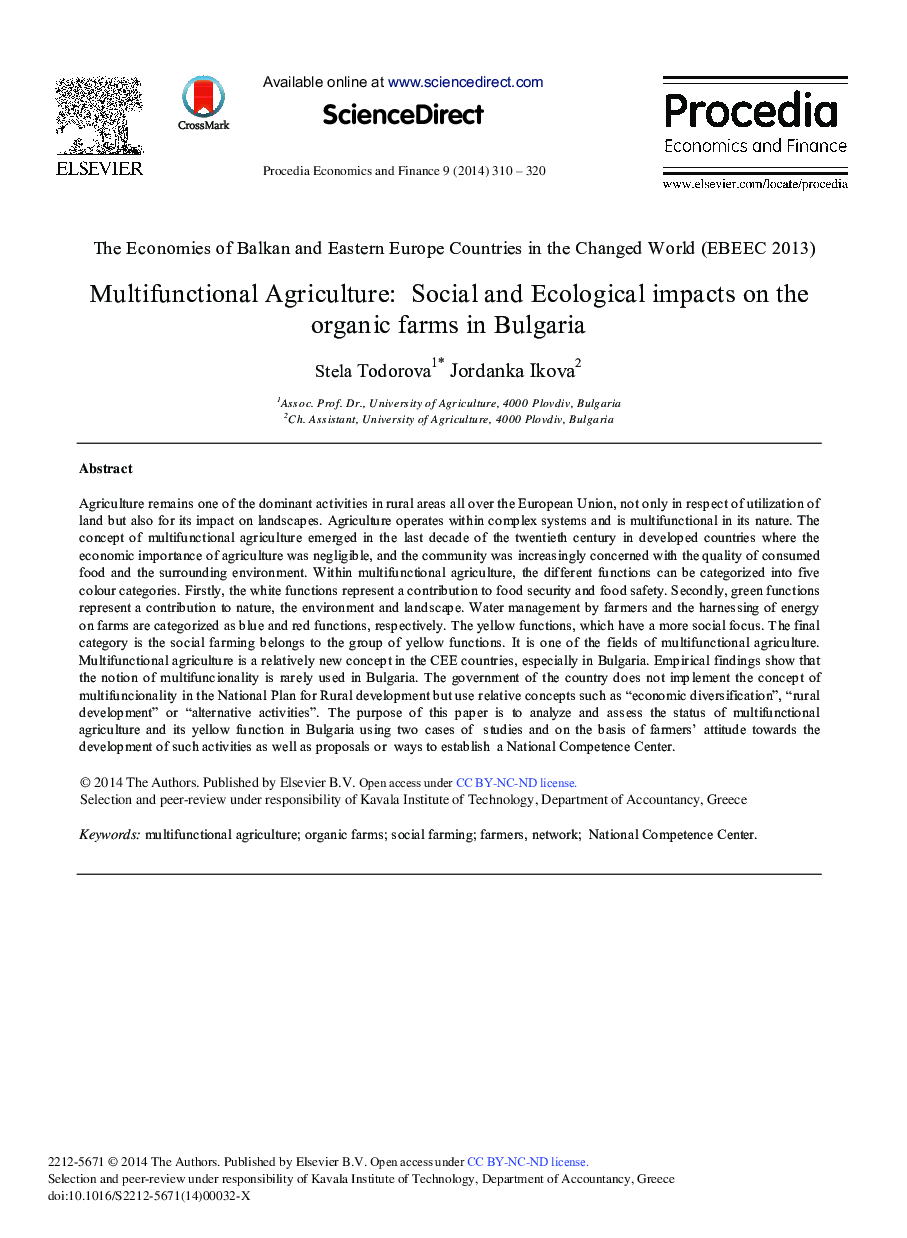| Article ID | Journal | Published Year | Pages | File Type |
|---|---|---|---|---|
| 982746 | Procedia Economics and Finance | 2014 | 11 Pages |
Agriculture remains one of the dominant activities in rural areas all over the European Union, not only in respect of utilization of land but also for its impact on landscapes. Agriculture operates within complex systems and is multifunctional in its nature. The concept of multifunctional agriculture emerged in the last decade of the twentieth century in developed countries where the economic importance of agriculture was negligible, and the community was increas ingly concerned with the quality of consumed food and the surrounding environment. Within multifunctional agriculture, the different functions can be categorized into five colour categories. Firstly, the white functions represent a contribution to food security and food safety. Secondly, green functions represent a contribution to nature, the environment and landscape. Water management by farmers and the harnessing of energy on farms are categorized as blue and red functions, respectively. The yello w functions, which have a more social focus. The final category is the social farming belongs to the group of yello w functions. It is one of the fields of multifunctional agriculture. Multifunctional agriculture is a relatively new concept in the CEE countries, especially in Bulgaria. Emp irical find ings show that the notion of multifunc ionality is rarely used in Bulgaria. The government of the country does not imp lement the concept of multifuncionality in the National Plan for Rural development but use relative concepts such as “economic divers ification”, “rural development” or “alternative activities”. The purpose of this paper is to analyze and assess the status of multifunctional agriculture and its yellow function in Bulgaria us ing two cases of studies and on the basis of farmers’ attitude towards the development of such activities as well as proposals or ways to establish a National Competence Center.
